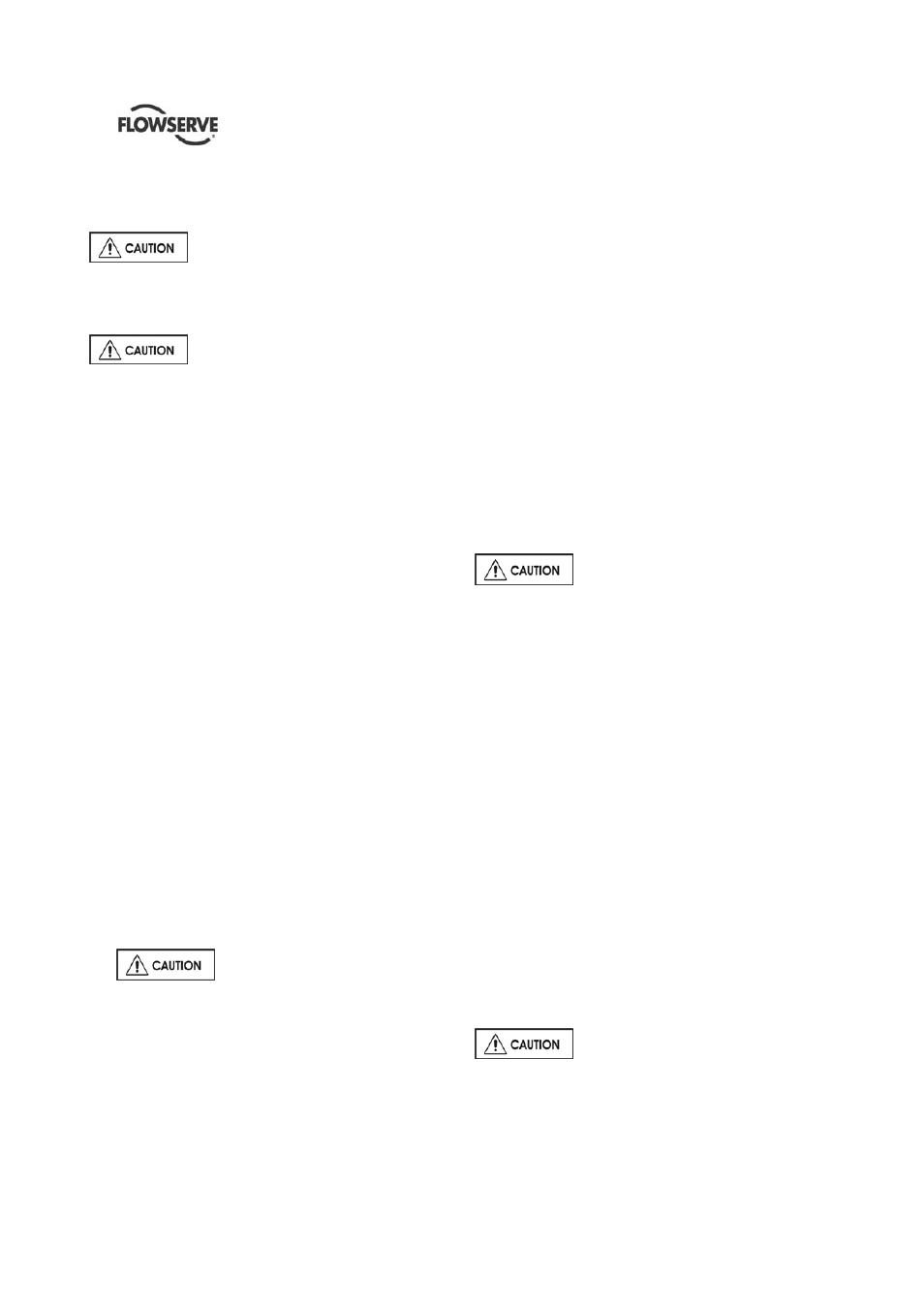Flowserve QLQ Vertical Worthington User Manual
Page 43

QLQ, QLQC USER INSTRUCTIONS ENGLISH 87900027 – 06/14
Page 43 of 61
A periodic inspection is recommended as the best
means of preventing breakdown and keeping
maintenance costs to a minimum.
Variation from initial performance is
probably an indication of changing system conditions,
wear, or impending breakdown of unit.
6.1.1 Routine inspection (daily/weekly)
Routine inspection schedule should
be developed and inspection log be maintained. The
following checks should be made and appropriate
action taken to remedy any deviations.
a) Check discharge pressure for proper operation
b) Check operating behavior. Ensure that noise,
vibration and bearing temperatures are within the
allowable limits.
c) Check motor current /driver power.
d) Check that there are no abnormal fluid or
lubricant leaks (static and dynamic seals) and
that any sealant systems (if fitted) are full and
operating normally.
e) Check the shaft seal leaks and make sure that it
is within the acceptable limits.
f) Check the level and condition of oil lubricant. On
grease lubricated pumps, check the running
hours since last recharge of grease or complete
grease change.
g) Check any auxiliary supplies e.g. heating/cooling,
if fitted, are functioning correctly.
6.1.2 Periodic inspection (monthly)
a) Check for lubricant contamination whether
bearing oil, or seal oil (if applicable) by sample
analysis.
b) Check all paint or protective coatings.
c) Check all power/instrument cable glands for
tightness.
Refer to the manuals of any associated
equipment for periodic checks needed.
6.1.3 Periodic inspection (six monthly)
a)
Check foundation bolts for
security of attachment, corrosion. Check grouting
for looseness, cracking or general distress.
b) Change
lubricants.
c) Check calibration of instruments.
d) The coupling should be checked for correct
alignment and worn driving elements.
Refer to the manuals of any associated
equipment for periodic checks needed.
6.1.4 Periodic inspections (yearly)
a) Check foundation fixing, bolting, grouting for
looseness, cracking or general distress.
b) Check unit alignment against previous
inspections.
c) Check calibration of instruments.
6.1.5 Periodic Inspection (3 yearly)
a) Check
internal
condition
of pump and all ancillary
pipework for corrosion/erosion.
b) Check internal pump components for wear.
6.1.6 Re-lubrication
Lubricant and bearing temperature analysis can be
useful in optimizing lubricant change intervals. In
general however, the following is recommended.
6.1.6.1 Oil lubrication
Maintaining the correct oil level is very
important.
If the pump is supplied with a constant level oiler the
oil level will be automatically maintained and as long
as oil is visible in the glass bottle there is no need to
refill. If however a sight glass has been fitted then
regular checks should be made to ensure the level is
maintained at the center of the glass window.
Refer to section 5.3.1 for oil grade recommendations,
section 5.3.2 for methods of oil fill, section 5.3.4 for
temperature limits.
6.1.6.2 Mechanical seals
No adjustment is possible. When leakage reaches an
unacceptable level the seal will need replacement.
6.1.6.3 Driver lubrication
Refer to driver manufacturer’s User
Instructions supplied with the pump.
6.1.7 Impeller re-adjustment
Ordinarily, impellers will not require re-adjustment if
properly set at initial installation.
All adjustments of the impellers will
change the seal setting, therefore, the seal must be
loosened from the shaft until the adjustment is
completed and then reset.
